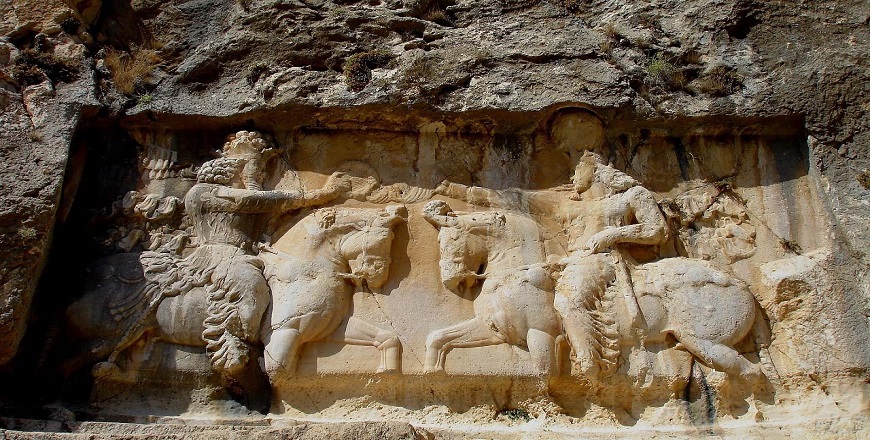

The Sasanians ruled Persia for over four centuries between AD 224 and 651, when they were overthrown by Muslim Arabs. They ran an empire which at its greatest was as large as that of Achamemenids, if one excludes Egypt, Syria and Asia Minor. Evidently they knew little of Achaemenid history, and yet the centuries of Hellenistic and Parthian rule had left a significant social and cultural impact on Iran. Persis, or Persia proper, had nevertheless retained certain traditional Persian characteristic and Zoroastrianism had flourished there more widely and strongly than elsewhere. Strangely enough, Iranian myths and legends gathered under Sasanian rule completely ignore the Achaemenids. But their disregard of the Arsacids is largely explained by the fact that they had defeated and destroyed them. This was a familiar feature of history writing, and not just in Iranian history: the Tudors were not very complimentary towards the Plantagenets, or the Bourbons towards the Valois.
The Sasanians’ international problems arose from periodic conflicts in three of their frontiers: west, east and north. In the west they faced Byzantine Romans – the eastern Roman empire centered in Constantinople, which had come into existence in AD 395 upon the division of the Roman empire into the western and eastern empires – the object of their conflicts often being Armenia and western Mesopotamia. In the east they faced the pressure, and sometimes downright power, of various eastern nomads. Some of them, notably Kushans. Racially of Iranian stock, and others of east-central Asian origin, established semi nomadic states one after other. In the north the Sasanians had to contend with the perennial raids of nomadic Huns, apart from the “Armenia question”, which was at once a separate problem and a bone of contention with Rome, or rather Byzantium.
Only four Sasanian rulers ably defended or extended the empire’s frontiers and maintained powerful and stable governments at home: in the third century AD, Ardeshir Babakan, founder of the empire, and his son Shapur I; in the fourth century, Shapur II; in the sixth century Khossrow I, entitled Anushiravan. Bahram V, in the fifth century, and Khosrow II, Parviz, in the sixth to seventh centuries, are also famous, but that is due to the legendary romances based on their life and times rather than ability and competence.
The official Sasanian language was Parsi or Middle Persian, later to be known as Pahlavi. It used a form of the Aramic script, so complicated by the frequent use of ideograms, that only a small minority, largely scribes, are likely to have had it in their command.
There is little trace of Sasanian philosophy or speculative sciences, and in fact it is unlikely that such disciplines existed in this period. Persian medicine, based on ancient Greek knowledge, developed and was taught and studied in a few medical academies, notably at the academy in Jondishapur. A famous Sasanian physician-cum-philosopher whose name has survived is Borzuyeh, the translator of Kelileh o Demneh.
The Sasanians formed the first Iranian state to have an official religion, Zoroastrianism; since then Iran has always had a state religion. Nevertheless, other cults and faiths had open or secret currency at this time, including Judaism, Christianity and Buddhism..........Read more.
The official Sasanian language was Parsi or Middle Persian, later to be known as Pahlavi. It used a form of the Aramic script, so complicated by the frequent use of ideograms, that only a small minority, largely scribes, are likely to have had it in their command.
There is little trace of Sasanian philosophy or speculative sciences, and in fact it is unlikely that such disciplines existed in this period. Persian medicine, based on ancient Greek knowledge, developed and was taught and studied in a few medical academies, notably at the academy in Jondishapur. A famous Sasanian physician-cum-philosopher whose name has survived is Borzuyeh, the translator of Kelileh o Demneh.
The Sasanians formed the first Iranian state to have an official religion, Zoroastrianism; since then Iran has always had a state religion. Nevertheless, other cults and faiths had open or secret currency at this time, including Judaism, Christianity and Buddhism...Read more